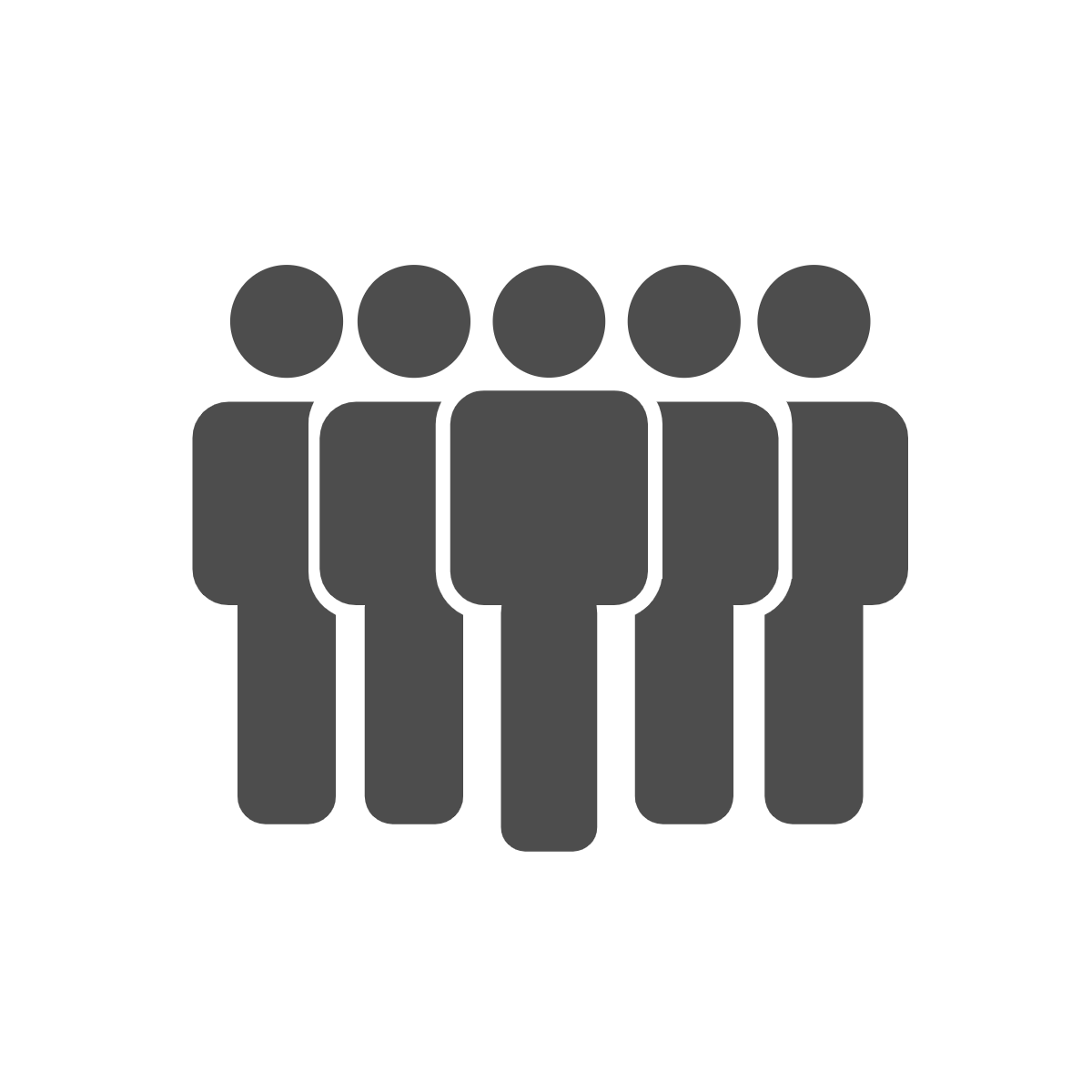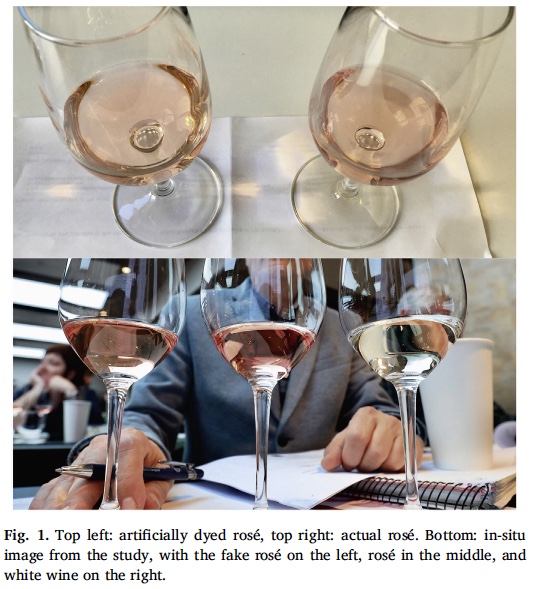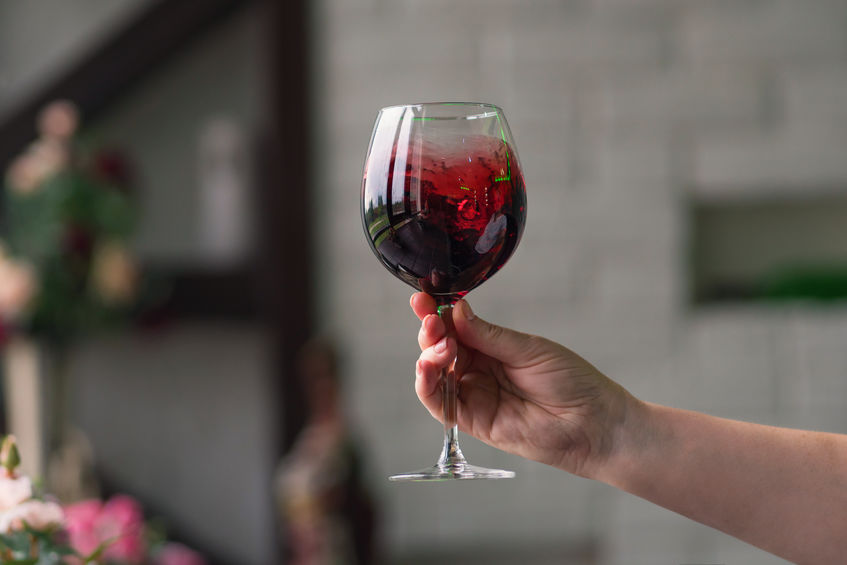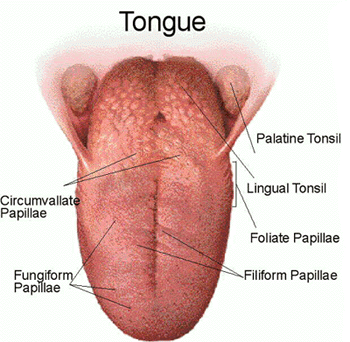Wine color can create both enjoyment and deception
Wine color is an important characteristic that can inform you of the wine before you even smell it. The pertinent information is on the grape type (red or white); the less obvious would be the wine age, or the climatic conditions for grape growing, or the winemaking style.
- That is why experienced wine tasters like to examine wine appearance and wine color in particular at the beginning of every tasting.
- That is also why I find this way of tasting inappropriate because experienced tasters eventually evaluate wine with their minds and not their senses.
Evaluating wine color first can trigger several biases, especially the halo effect and logical errors, as I covered in a different article.
Janice Wang and Charles Spence once again demonstrated the biasing effect of wine color on aroma and flavor perceptions in a study they recently published. This study entitled “Drinking through rosé-colored glasses” inspired this article.
How the 'Wine Color' experiment was set-up
The experiment took place at a Neuroscience and wine symposium. One hundred sixty-eight participants volunteered to participate. They gathered in a lecture hall where other volunteers served the wines and provided instructions for the test.

Among the 168 participants;
- 76 women, 85 men, seven did not respond on their gender;
- Twenty-two beginners in wine tasting, 62 intermediate level who had taken wine appreciation class, and 79 wine tasting experts, working in the wine trade;
- Age varied from 18 to 60+ years old, with the majority being within 35-60 years old.

Three wines were part of the experiment;
- A white wine (W);
- A rosé wine (R);
- A white wine colored to look like the rose wine (WR).

The task consisted of 3 steps;
- Smell each glass and select three descriptors (out of the 30 provided on a list) that best describe each wine;
- Taste each wine and select also three descriptors;
- Indicate how much you liked each wine, how intense was the flavor, and how difficult were the description tasks.
The wines were presented according to two different orders: W-R-WR and W-WR-R.

The scientists had three hypotheses they wanted to validate with this experiment.
- The artificially colored white wine (WR) will be perceived different to the non-colored white wine (W);
- The colored white wine (WR) will be perceived similar to the actual rosé wine (R);
- The experts will be more influenced by wine color than the beginners.
How wine color influenced the tasting results
Key findings
- The colored white wine was less liked than the white wine or the rosé wine.
- This fake rosé was also more difficult to describe than the actual rosé, especially for tasters beginning or at an intermediate level of wine tasting. Overall, experts didn’t find the task difficult.
- The fake rosé was also described with more similar descriptors to the actual rosé wine than the white wine. That was particularly true for intermediate level tasters and experts.
This study once again found that experienced tasters were more biased by wine color than beginners.
Other researchers have suggested that experts were using wine color to predict the possible aromas and flavors based on their tasting experience.
Indeed, experts learn to memorize wine color and the aroma and flavor they most frequently perceived in such wines. That’s why they look at the wine first before even smelling. Color gives them cues.
Wine color triggers tasting biases
Many things can bias your wine evaluation, and most of them come from your mind; we call them psychological errors, as explained in this article.
“Drinking through rosé-colored glasses” showed that color could mislead you in how you associate aroma and flavors with a wine color and how it also influences how you like or dislike a wine. The fake rosé should have been liked similarly to the white wine since they were the same wine.
Here is a challenge for you!
Among the ten biases which can influence your wine tasting,
what are the ones that wine color triggered in this article?
Take the quiz and get the chance to win a $10 Amazon gift card.
Leave your first name and email address to enter the draw.
Thanks!
First published: November 3, 2019
Reference:
Wang Q.J. and Spence C. Food Research International 126 (2019) 108678



